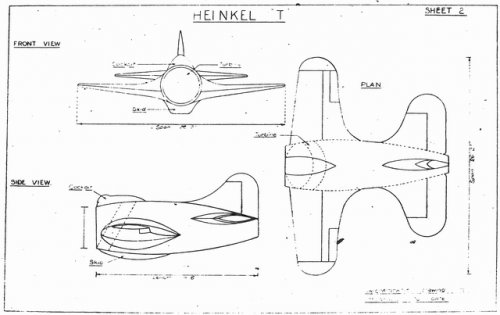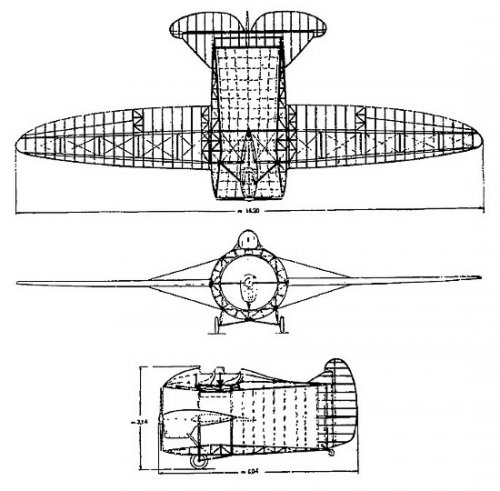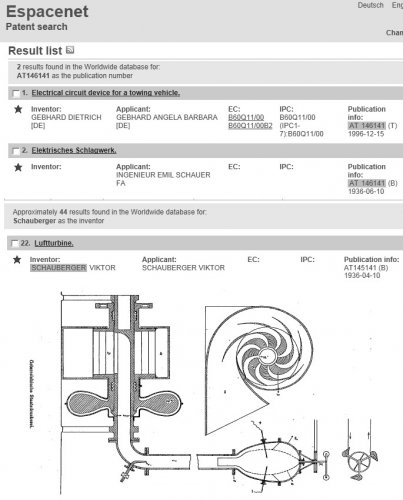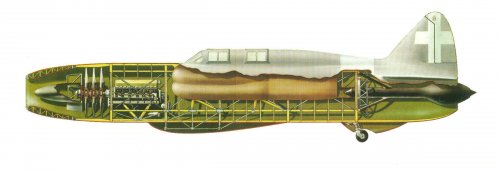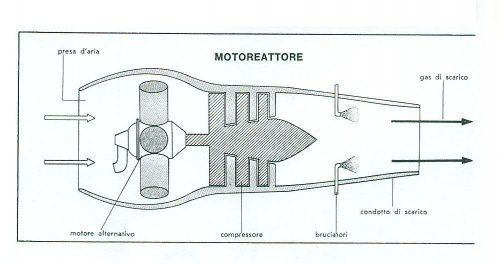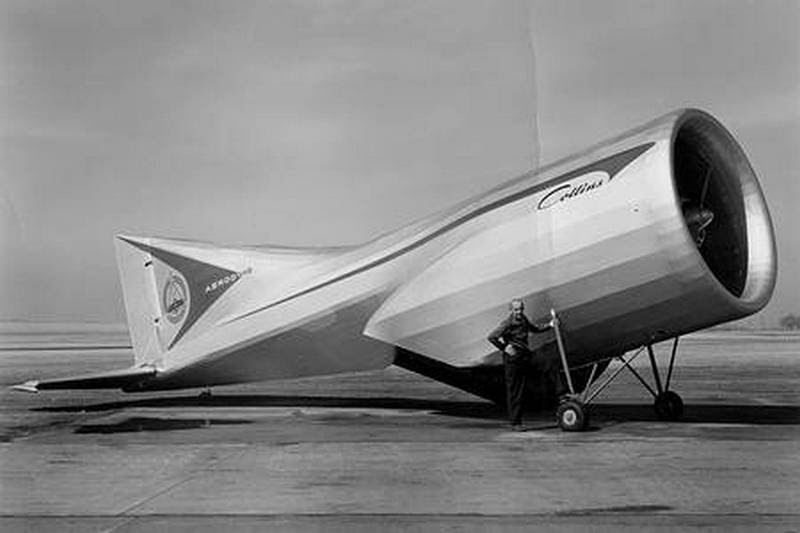http://discaircraft.greyfalcon.us/Viktor%20Schauberger.htm
lol, forget that site...Almost everything that's on this site is mainly fiction!
Could that be the one in the mysterious Heinkel?
No!
The corresponding patent has never been granted, as also other such patents during the war.
But to be honest, the letters I mentioned are really letters from/to Schauberger. But just to make things clear, his work has been completely hijacked by the esoterics or ufologists etc. although it doesn't seem like anyone of them ever read his corresponding patents or his many letters. Just FIY what's written on the Internet about Schauberger is surely more than 95% pure nonsense and does simply not correspond to the true history.
Any story about anti-gravity propulsion etc. is pure nonsense. Sure Schauberger's strange vocabulary (as not studied scientist) was not helpful in this relation, as people could interpret it as they wanted.
The story goes like this, as narrated by Schauberger and from his letter-correspondence:
At some point in time Schauberger met Heinkel. He mentioned his special "Turbine" for propulsion which shall have an extraordinary performance. Heinkel was interested and Schauberger explained the engine to him, drew sketches etc. He then said to Heinkel, that if he's interested in building a prototype, then he shall contact him for making an arrangement. But he didn't hear anything from him anymore, so he thought that Heinkel wasn't interested.
Much later Schauberger heard through the SS, that Heinkel actually built a prototype which flew over 1000km/h, but which had frequent completely unpredictable engine stalls, and that their technicians are out of ideas of how to fix this. When they explained to him, how Heinkel made the Piston-Engine/Turbine aggregate, he said, that he knew immediately what Heinkel was doing wrong, and that in this arrangement an engine stall would be logic.
Not much later Heinkel sent a guy to Schauberger with the following offer: Schauberger would get 6% of the profit for selling the machines, if he would join the project and get the thing to work.
Schauberger declined, calling Heinkel a cowardly fraudster, not even coming to him personally.
He also got to know through the SS, that Heinkel had contact with the patent-office, and told them that they shall not give Schauberger the patent, otherwise he would get problems.
This is then also, what the patent-office told Schauberger: Namely that he can have the patent if he takes out, that this engine is for driving airplaines. But Schauberger didn't wanted to get this foul deal, so he declined. So the patent in the end was never granted.
Later he then worked directly for the SS at Mauthausen. But there he wasn't interested at all in producing any workable result, as the leader of the concentration camp told him upon arrival, in a very drunk mood, that he had the order to execute everybody working on this project, if it proves to be successful.
But the SS never really believed strongly in it, as he had terrible problems getting the needed resources. So nothing like, the Nazis were all into these special "occult" projects. I think they rather thought: It cannot hurt. Maybe this crackpot is right, so let's let him work on it in a concentration camp (doesn't cost anyways anything). But when it was about putting some rare resources (metals) into the project. they were rather hesitant, probably thinking that these resources are better used in "real" projects. That's at least the impression I got.
If the engine really would have worked or not? I don't know. Guess we will never know.
I always wondered, what prototype Heinkel may have used. I always thought, perhaps a modified He 178. Then I stumbled upon this Heinkel "T" pic and remembered the sketch drawn from Schauberger, how a plane with this engine would look like:
And there are certainly similarities.
According to the letters, the SS told, that Heinkel let the exhaust of the piston engine out at the back. According to Schauberger this was a huge mistake, as these exhaust gases would have been needed in the front Turbine.
If this Heinkel "T" is really this prototype plane? I don't know.
But what really would interest me, as an open question for all the people more familiar with the procedures during WWII: Was it common practice to tow prototype planes into the air with a second plane for testing, or would that indicate, that e.g. a ramjet or some other engine was used, which needs higher airspeeds for starting.

